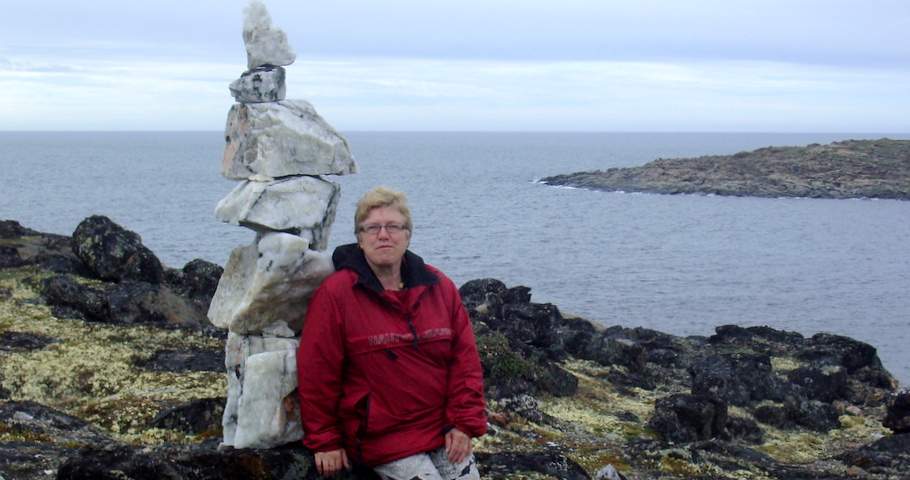 More than 6 000 women and children per day escape violence in Canada. Within these, Indigenous and Inuit women and girls between ages 15 and 34 are three times more likely to be victims of violence than other women in Canada.
More than 6 000 women and children per day escape violence in Canada. Within these, Indigenous and Inuit women and girls between ages 15 and 34 are three times more likely to be victims of violence than other women in Canada.No Child Should Take the Long Way Home is a grassroot initiative that wants to reverse the tendency of more Indigenous children from distant communities sent into foster care across the country.
Gender socialization experiences encountered in their new cultural context
Emotional health challenges are widespread among girls in the context of the gender socialization experiences they encounter in their new cultural context. Gender socialization has been identified as a significant factor in the mental health of young people. TV, the Internet has changed young people's expectations to meet idealized standards of femininity and masculinity that create new pressures. This has negative impacts on the mental health of both girls and boys. All are influenced by stereotypes about girls, boys, women, and men.Violence tends to repeat itself
Many women say they have been victims of repeated violence; furthermore, having been a victim once, it tends to repeat itself in their lives. A girl who has been through violence as a child is 5 times more likely to be mistreated as an adult. Also, Indigenous women are twice more at risk of dying from the beatings than non-Indigenous women.Overrepresented within homicidal victims, data confirm that the number of missing or assassinated Indigenous women from 1980 to 2012 is disproportionate in comparison to the non-Indigenous and shed more light on the circumstances of their death and/or disappearance. In cases where there were family ties between the homicidal victims and the offender, the police reported backgrounds of family violence more often than in non-aboriginal. Escalating family violence in certain homes contribute directly to the rising numbers of homicidal victims.
The prolongation of problems causes stress, anxiety or depressive state in many children
No child develops without experiencing difficulties and tensions arising from relationships with family and peers. However, the prolongation or worsening of these problems can cause stress, anxiety or depressive state in many children. In a family where there are bursts of violence, the violence frequently escalates, the children often being at the heart of these altercations.Risk factors associated with violence
As most women, Quebec women from far away communities in Nunavik hesitate to denounce the violence undergone, making it harder to understand the specifics of the violence they suffer, in particular, domestic violence. The source of this unfortunate situation is due to a gender systemic discrimination. They are often viewed as the sole responsible person to ensure the security and protection of their children.Considerable challenges face the women
Witnesses have pointed to significant shortcomings in the protection given to Indigenous women and girls who are victims of violence. Generally speaking, women trying to flee an abusive situation, especially living in rural or isolated communities, face considerable challenges: support services are clearly lacking or inadequate. Since they fear losing custody of their children, they will not turn to the authorities. The serious breakdowns in communication between the police and the families do not bode well for a woman fleeing a situation of domestic violence.Since the concentration of social issues combined with many violence risk factors is more so in Indigenous communities (lack of work opportunities leading to poverty, isolation, too much proximity in the homes,), violent crimes against aboriginal girls and women remain a real problem across Canada.
The communities are the in the best positions to find solutions
It is evident that solutions to counter domestic violence must not come merely from institutions and appropriate agencies, otherwise, answers will be largely fragmented, and services remain inaccessible. The communities are in the best position to find solutions to counter violent crimes. All those directly affected by violence – family members and of the community – must participate in the decision taking to contribute in putting together the necessary basis for the health and well-being of their people.All actions must necessarily be part of a continuous conversation because those who have lived it knows very well the cost of daily violence in their lives, environment, affective relationships and their capacities to offer neighboring and brotherly assistance.
Coordinated strategy to counter violence towards women in Canada
Not only is it necessary to have a plan of action and coordinated strategy to counter violence towards women across Canada, the goal must be to defend women equality, to protect their rights, to improve their economic and social conditions. By dealing with problems like the shortage of housing, the poverty of which Indigenous children and women are the main victims, more socially appropriate behaviors will impact domestic violence and sexual violence.Dedicated initiatives have permitted Indigenous women to regroup
In Quebec, works from “Saturviit” have made it easier to understand the awareness and the particular complexity of violence issues in Inuit communities.Certain dedicated initiatives have allowed Indigenous and Inuit women to regroup while giving public visibility to certain causes: such as that of the Innu march, to the Idle No More movement or even the, I am next movement on Facebook.







No comments:
Post a Comment